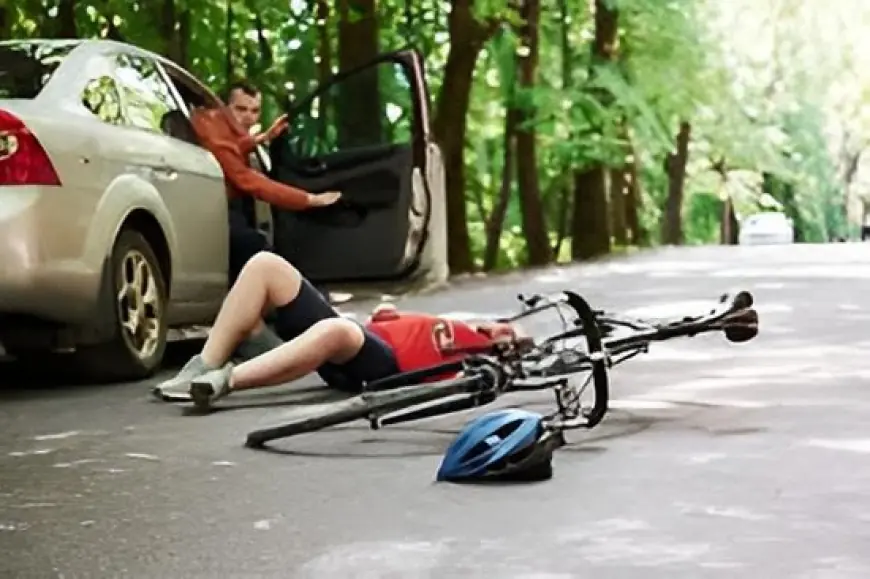Can Chiropractic Care Help After a Car Accident in Salt Lake City?

Car accidents are traumatic. Whether it’s a minor fender-bender or a serious crash, your body can take a beating even if you feel “fine” right after. But here’s the thing: most people don’t realize how much stress, tension, and misalignment an accident can cause until days or even weeks later. That’s where chiropractic care steps in to support the body’s natural recovery process.
Why Car Accident Injuries Often Go Unnoticed
Car accidents create a sudden jolt. That force can knock your spine out of alignment and strain your muscles and soft tissue, especially in your neck and lower back. But your body has a way of going into survival mode, masking pain initially with adrenaline.
By the time you notice stiffness, headaches, or back discomfort, the issue may already be affecting your posture, range of motion, and nervous system. That’s exactly why people start looking for car accident chiropractic near me once symptoms creep in. Early care can make all the difference.
The Role of Chiropractic in Auto Injury Support
Chiropractors trained in auto injuries understand how to support the body’s innate adaptive physiology—meaning, they work with your body’s ability to adjust and rebalance post-trauma. But not every chiropractic session is the same. Some places rush you in and out in 10 minutes with a basic adjustment. Others provide a more integrative, whole-person approach that takes the time to uncover what’s going on under the surface.
With chiropractic care after a car accident, the right provider offers:
- Thorough evaluation of musculoskeletal imbalances
- Gentle, focused adjustments that help relieve tension
- Soft tissue work to reduce inflammation and muscle guarding
- Neurological checks to assess nervous system stress
- Time: 50 to 60 minutes per session to fully address what your body needs
That extended, holistic approach goes beyond quick-fix adjustments. It supports your system in ways traditional methods simply don’t.
What Makes a Difference in Your Recovery
If you’ve already started searching for a car accident injury chiropractor in Salt Lake City, you’re probably feeling the impact of whiplash, back pain, or lingering stiffness. These symptoms shouldn’t be ignored.
Here’s what sets high-quality care apart:
- Customized care plans: Not every accident is the same. The care you receive should be tailored to your body’s response.
- Mind-body connection: Look for practitioners who support both physical recovery and nervous system regulation. The trauma isn’t just in your joints; it’s in your whole body.
- Real time with your provider: Sessions that last 50–60 minutes give room for assessment, adjustment, and meaningful progress.
- Not just symptom chasing: It's not about covering up pain, but about understanding what your body needs to function fully again.
Common Injuries Supported Through Chiropractic
After a crash, your spine and soft tissues are often affected. Chiropractors with experience in auto injuries help support:
- Whiplash and neck strain
- Lower back misalignment
- Hip and sacral discomfort
- Muscle spasms and joint stiffness
- Tension headaches from spinal imbalance
All of this ties back to your nervous system. A properly aligned spine allows better communication between your brain and body so your body can regulate, adapt, and rebound more efficiently.
Why Chiropractic Shouldn’t Be Delayed
The longer you wait, the more your body may compensate with poor movement patterns, locked-up joints, or chronic muscle tension. Seeking out chiropractic care after a car accident in Salt Lake City quickly helps keep small issues from becoming long-term problems.
Plus, the experience of visiting a chiropractic care center in Salt Lake City that offers focused, hands-on time can be calming both physically and mentally. It's more than just “getting cracked.” It's a supportive environment where your body can recalibrate and realign at its own pace.
Conclusion
So, can chiropractic care help after a car accident in Salt Lake City? Absolutely when it’s done right. It’s not just about making your back “pop.” It’s about working with your body, giving it the time and support it deserves, and addressing all the layers of impact that come with trauma.
What's Your Reaction?
 Like
0
Like
0
 Dislike
0
Dislike
0
 Love
0
Love
0
 Funny
0
Funny
0
 Angry
0
Angry
0
 Sad
0
Sad
0
 Wow
0
Wow
0

















































